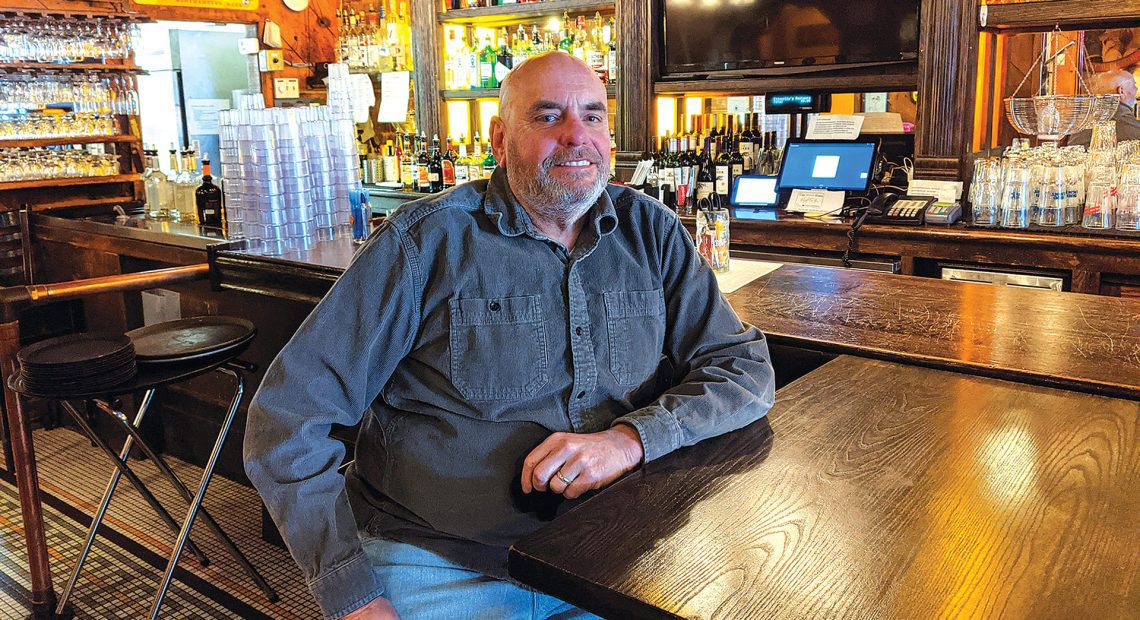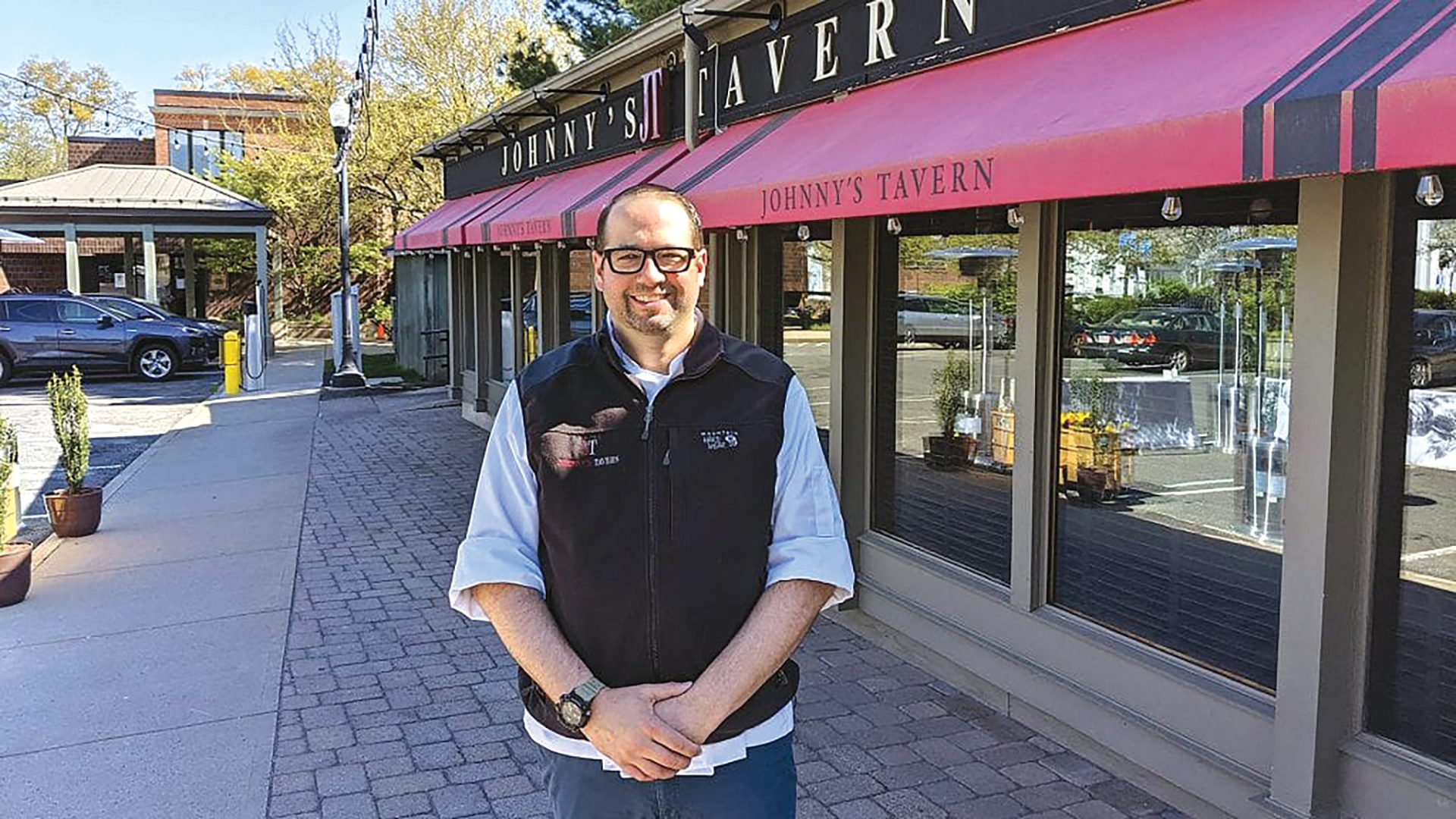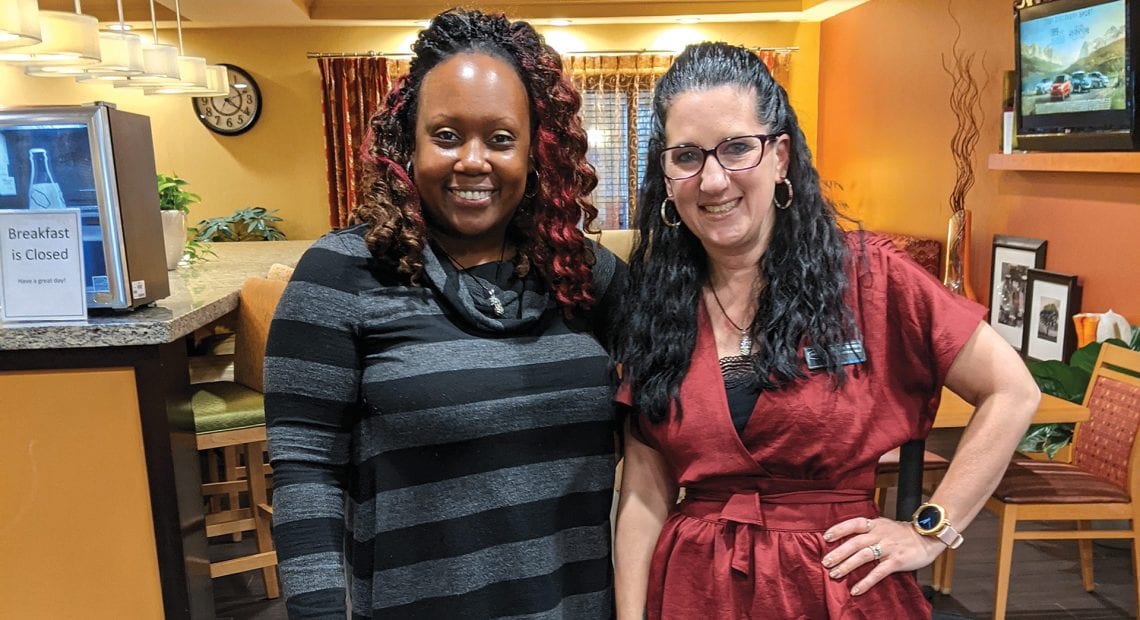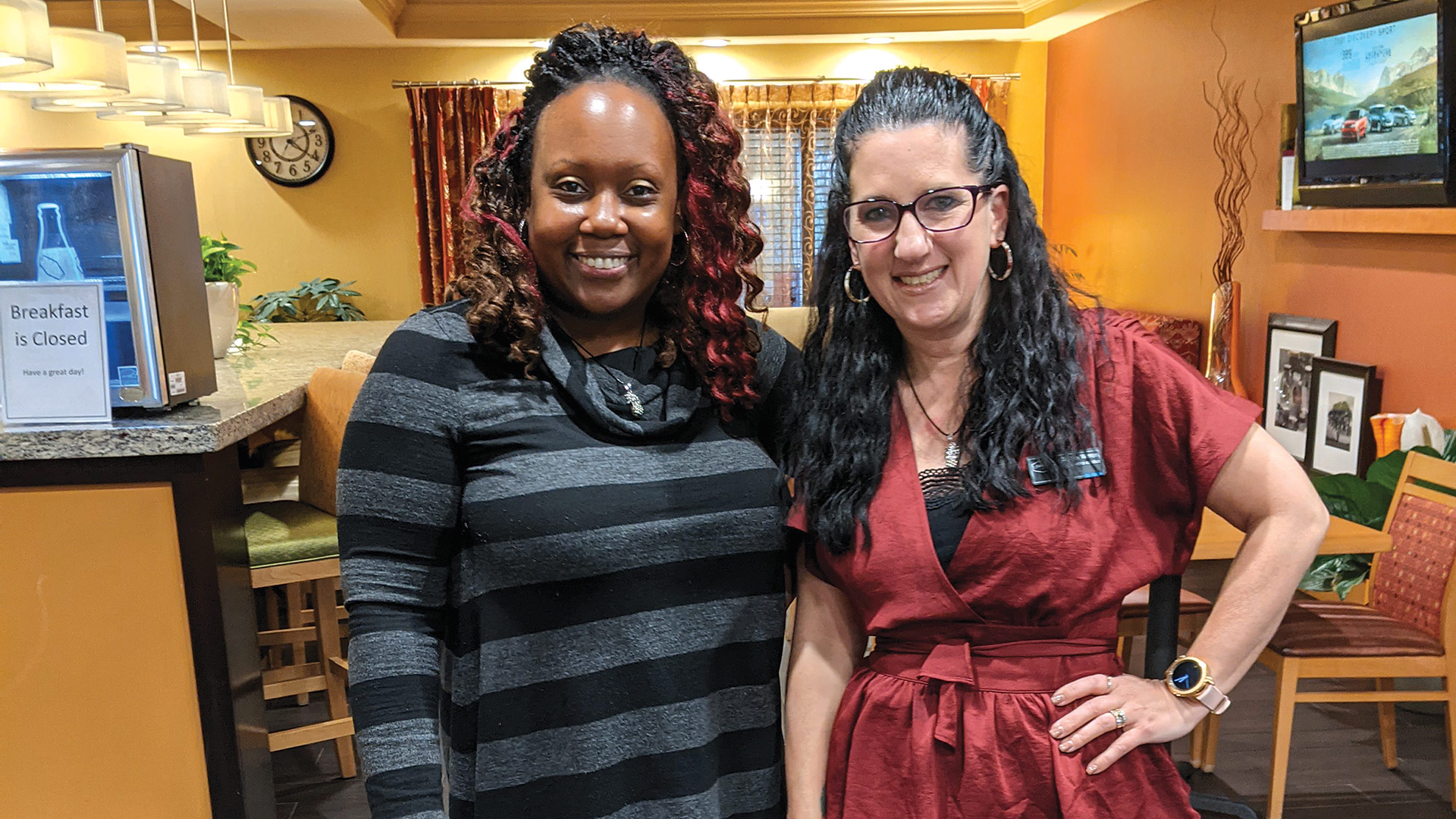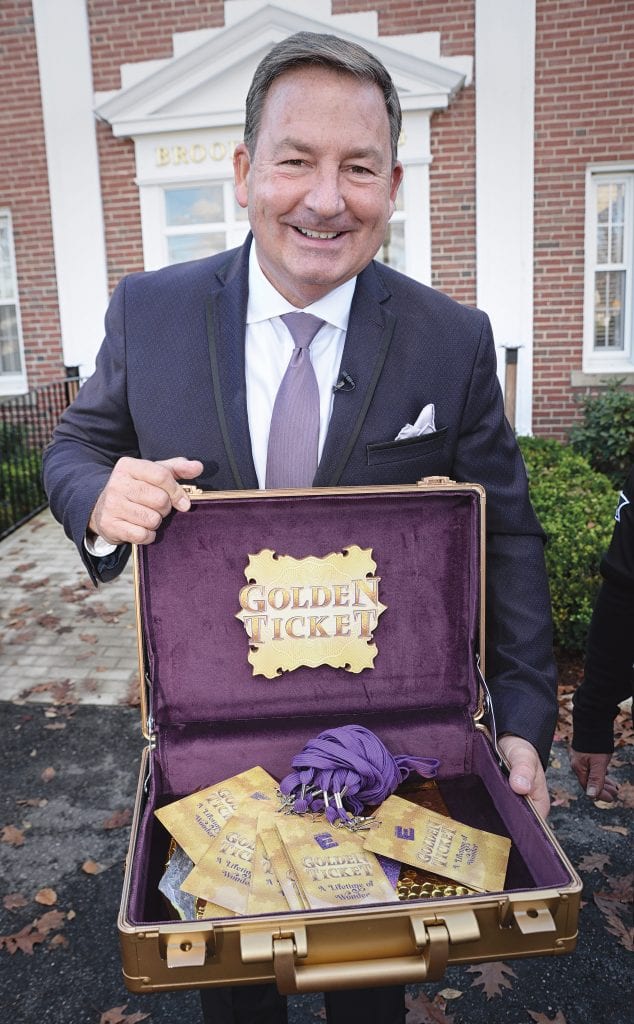Community Spotlight
Betsy Andrus says that, like most communities dominated by businesses in the retail, hospitality, and cultural realms, Great Barrington suffered mightily during COVID-19.
But through that suffering, there were lessons learned and resiliency gained, said Andrus, executive director of the Southern Berkshire Chamber of Commerce (SBCC), adding that these lessons, and this resiliency, are serving this eclectic community well as it puts COVID in the rear view and moves deeper into its busiest seasons — summer and fall.
Indeed, among those lessons learned is the popularity of — and, now, the necessity for — outdoor dining, she said, adding that it is now a huge part of the scene in the city’s vibrant downtown and its pulsating center of activity, Railroad Street.
Betsy Andrus
“The area just keeps on growing — it grew a lot during COVID, as a lot of places where people had second homes did. People moved up here and got out of the city, and that’s a trend that has made our winters much better.”
“Before COVID, very few, if any, of the restaurants offered outdoor dining,” she told BusinessWest. “Now, most of them do, and it’s a huge part of the scene on Railroad Street.”
Paul Masiero owns one of those restaurants, Baba Louie’s, maker of sourdough pizza and other specialties and a Great Barrington staple for nearly 30 years. He said he started offering outdoor dining during the pandemic and is now part of the broader scene on Railroad Street, which the city actually closes off to traffic on Friday and Saturday nights for several months a year and turns it over to a festival, figuratively but also quite literally, of outdoor dining.
“It’s kind of like a street fair,” Masiero, which is organized by Berkshire Busk!, an initiative that strives to improve economic development and community engagement during the summer by harnessing artistic talent to create a new and vibrant downtown cultural experience. “From July 4 to Labor Day, we put out 10 tables, and there are five restaurants that take part. It’s been really, really good; the closing of the street has been a great decision for the community — a lot of people come out.”
Beyond outdoor dining and the added vibrancy, COVID has helped Great Barrington and other Berkshires communities in other ways, Masiero said.
He noted that, at the height of the pandemic, some of those living in New York and other large urban areas who had second homes in and around Great Barrington decided to sell the first home and move there.
This growth in population has brought new business for restaurants and other types of ventures, he said, and brought more business throughout the year (more on that later).
Restaurants are just part of the picture in Great Barrington, the largest and most vibrant community in what would be considered Southern Berkshire County, said Andrus, adding that this city of just over 7,000 people has “something for everyone.”
That list includes shops, mostly smaller, specialty shops in and around downtown, she said, as well as culture, most notably the Mahaiwe Performing Arts Center, where, this summer, visitors can do everything from see some vintage films, from The Empire Strikes Back (July 28) to The Lion King (Aug. 11), as part of its Friday Night Summer Movies series, to a live performance by Broadway star and Tony Award winner Sutton Foster on Aug. 19.
“COVID forced them to look at other avenues of doing business. Before, they were kind of content and didn’t bother to really look at what they doing, why, and how. COVID forced them to think outside the box, which, for some locations, really helped — a lot.”
It also includes outdoor recreation, she said, listing the Ski Butternut resort, hiking, camping, and watersports facilities, among many others.
“Whoever comes here … there’s going to be something for them,” Andrus said. “Whether you like opera or just want to sit and have dinner and listen to music, or shop, or antique, you can find it all here.”
For this, the latest in its ongoing Community Spotlight series, BusnessWest takes an in-depth look at Great Barrington, how it has staged an impressive recovery from COVID and its after-effects, and how it manages to live up to that promise of having something for everyone.
Taking Center Stage
Masiero told BusinessWest that, after working in the restaurant business for several years for various establishments, he was ready to get out and try something different.
“I was tired of working for other people and wanted out,” he said, adding that, around that time, Baba Louie’s came onto the market. He measured the risks and potential rewards of buying the establishment, and decided that the latter far outweighed the former.
“I realized I could be the owner, be the head guy,” he said. “I decided to take a chance on it and see what I could do.”
That was 23 years ago, he went on, adding that what he could do, and has done, is not only continue the business, but build on it, becoming a part of the fabric of the economy.
He’s opened a second location in nearby Hudson, N.Y., and moved the Great Barrington location from Main Street, where it held court until just before COVID, to a larger location on bustling Railroad Street.
There, it has thrived, he said, adding that the scene in Great Barrington today is characterized by vibrancy and energy, and not just during the summer, thanks in large part to that aforementioned growth in population witnessed by the town and surrounding communities such as Egremont, Mount Washington, Otis, and others.
“The area just keeps on growing — it grew a lot during COVID, as a lot of places where people had second homes did,” he noted. “People moved up here and got out of the city, and that’s a trend that has made our winters much better.
“Berkshire County is really a destination for summer unless you ski — it’s a summertime destination with Tanglewood and all the outdoor theaters and playhouses,” he went on. “But it’s grown quite a bit in the winter, too; all our business used to happen in the summer, but now it’s more of a year-round business.”
Andrus agreed, noting that, beyond this COVID-generated population growth and its accompanying benefits, the pandemic eventually helped businesses by forcing them to dig deep, pivot in some cases, and find new ways to carry on.
Great Barrington at a glance
Year Incorporated: 1761
Population: 7,172
Area: 45.8 square miles
County: Berkshire
Residential Tax Rate: $14.07
Commercial Tax Rate: $14.07
Median Household Income: $95,490
Median Family Income: $103,135
Type of Government: Open Town Meeting
Largest Employers: Fairview Hospital; Iredale Mineral Cosmetics; Kutscher’s Sports Academy; Prairie Whale
* Latest information available
“COVID forced them to look at other avenues of doing business,” she explained. “Before, they were kind of content and didn’t bother to really look at what they doing, why, and how. COVID forced them to think outside the box, which, for some locations, really helped — a lot.”
Overall, Great Barrington continues to thrive because of its full menu of offerings, enjoyed by residents and visitors alike, she went on.
“There’s really unique shops with things you can’t get in the box stores. And there’s food; I’ve traveled all over the country, and I always get to places and think, ‘I’ve got to get home because the food is not good — I’ve got to get back to the Berkshires.”
This is an ever-changing community, Andrus said, noting that, while many establishments have been doing business for years and even decades, there are always new businesses opening, making each visit to the city different and fresh.
She noted that, coincidentally, some of the longer-tenured stores in the community — such as Out of Hand; Evergreen, a crafts store; and Byzantium Clothing — have closed due to retirements or will close soon. But storefronts are rarely vacant for long, she added. “Sometimes is looks there’s an empty spot, but it’s not.”
While the town is more of a year-round destination now, summer is still the busiest and most vibrant time of year — and the outdoor dining and accompanying entertainment on Railroad Street have made it even more so, she said.
“There’s entertainment of all different sorts throughout the evening each night that the road is closed,” she explained, noting that Berkshire Busk! provides everything from musicians to acrobats to balloon-character makers. Visitors come for the entertainment and then often stay for dinner at one of the restaurants.
Amid these good times, there are challenges, especially with the regionwide problem of finding and retaining adequate levels of talent. Indeed, many restaurants have been forced to reduce the number of days and hours they are open, Andrus said, adding quickly that most are coping and making the most of a difficult situation.
Right Place, Tight Time
Masiero can’t remember where, but he read somewhere that Great Barrington was listed among the top 10 places to move to during COVID (Hudson, N.Y. was the number-one destination, he recalled).
That ranking speaks volumes not only about how the pandemic that initially bruised this small town has gone on to help it, but also about all that this colorful community has to offer.
As Andrus said, it does have something for everyone, and now there are seemingly more people to enjoy it all.
The scene on Railroad Street on weekend nights tells the story — in all kinds of ways.





